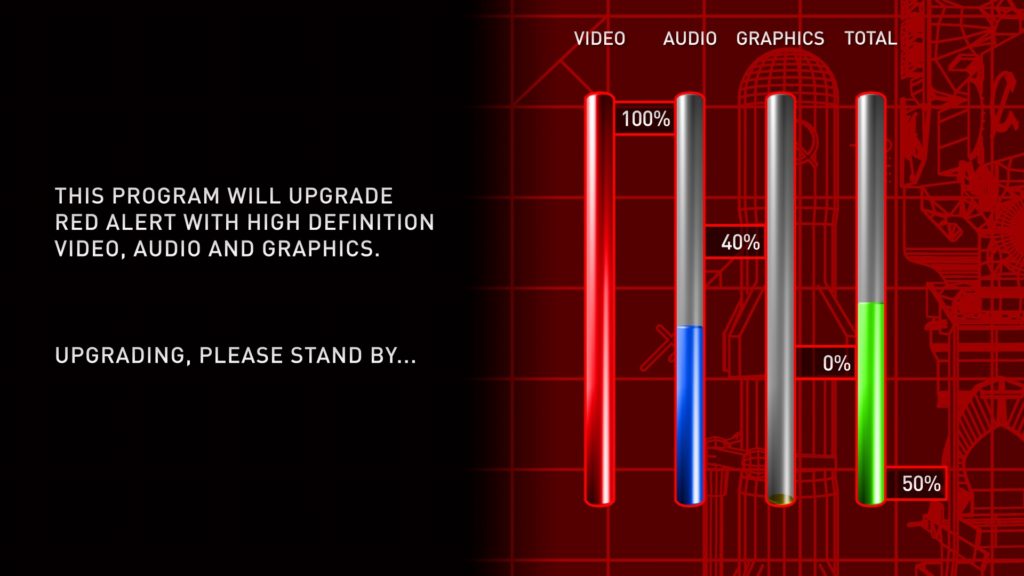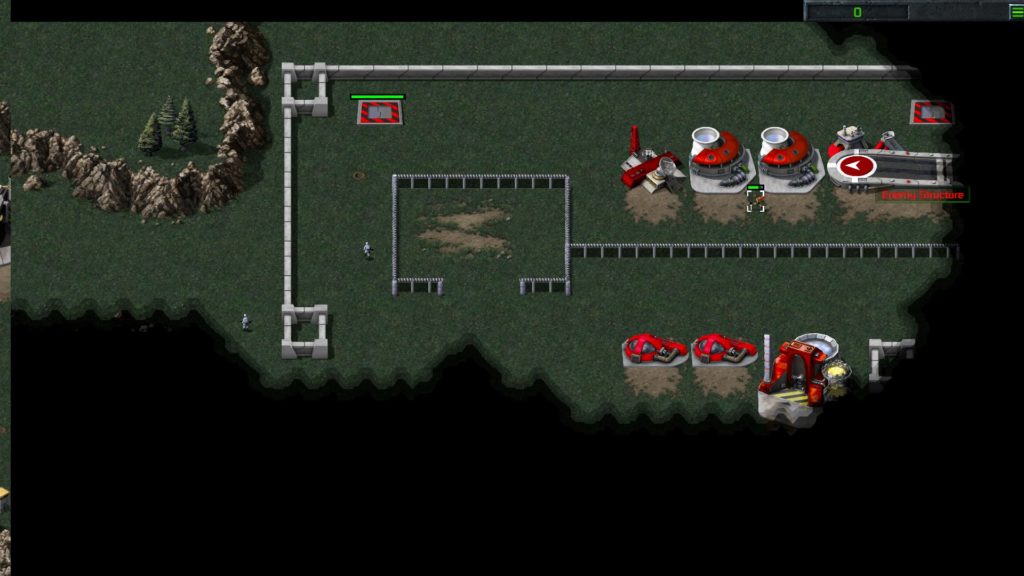
In the prologue to Command & Conquer: Red Alert, plucky physicist Albert Einstein develops a time machine. Haunted by the horrors of World War 2 – both as a German Jew and one of the fathers of the atomic bomb – he uses the ‘Chronosphere’ to travel back to 1924 in order to assassinate Hitler and prevent the war from taking place.
There is something fitting in the way that in the year 2020, after two decades of terror attacks, war in the middle east, creeping fascism and ecological disasters, the developers of the game have reunited to release an HD remaster of Command & Conquer and its sequel Red Alert, and all their various expansion packs and version-exclusive bonus missions. People like myself who played these games back in the day will find themselves transported back to a happier time, perhaps with a feeling that the world didn’t have to turn out this way.

The original Command & Conquer paints a portrait of a near-future world where a media-savvy transnational terror network peddles fake news and conspiracy theories to drive wedges into the world political order. Funding for the Global Defence Initiative is cut, as public opinion falls for the propaganda of the Brotherhood of Nod – a death cult in which the only virtue is total obedience to its leader. The world economy has become wholly dependent on the farming of Tiberium, a strange, crystalline plant that is hugely valuable but also happens to be poisoning the planet. I have genuinely seen people praise this as a throwback to a time when videogames didn’t deal with real-world politics.
For me, the first big nostalgia hit came on GDI mission 3. Once I got my base up and running, it occurred to me that this was my earliest memory of Command & Conquer – arriving late to a friend’s 13th birthday party and finding my guys squinting at the TV in search of SAM sites. On mission 6, as I carefully manoeuvred my wisecracking commando past patrolling attack buggies, I recalled standing in the school lunch queue while one of my pals quoted his favourite quips – *bang!* “That was left-handed!”

I was always more of a Red Alert guy, personally. I had the PlayStation version, which meant I couldn’t save my game during a mission, but I could slip my console in a rucksack and walk across town to a friends house to play multiplayer games using the link cable – apparently this was not a commonly-used feature, but we set it up once or twice a month to play classics like Red Alert, Doom and Armoured Core, and also Assault Rigs.
I think this period of intense 1-v-1 skirmishes taught me a lot about the dynamics of strategy games. Most people who played a lot of multiplayer matches came away with stories of house rules and gentlemen’s agreements – no nukes, no attacking for the first 10 minutes, etc – which all tried to course-correct the flow of the game towards the parts they found fun. I’ve always thought that one of my big on-ramps into making games for a living came from analysing the worst parts of this experience.
Scrolling through the discussion forum on Steam there’s a general agreement that these remastered games are very faithful to the originals, but a lot of debate over whether that’s a good thing or not. Predictably, you’ve got a lot of bores who need the world to know that modern gamers are coddled by tutorials and convenient UX; on the other hand, there’s a lot of people complaining about how unfair and unexplained some of the campaign missions are.

If you ask me – and you did, by visiting this page – the faithful recreation of period game design is GOOD, even if the design principles being recreated are BAD.
There are many little design decisions in this game that I hate. One example I’ll give is the way most levels require you to find and destroy every single enemy unit and building, even though most battles are all but won once you knock out the enemy’s construction yard. It drags the game out into these weird, unsatisfying denouements where your fleet of tanks have smashed the enemy base to rubble, but you can’t move on until you’ve searched every corner of the map for stray soldiers.
However! It’s these rough edges that make the game feel so of-its-time, and I’ve really enjoyed grappling with it again. The real-time strategy genre has evolved in different directions through games like StarCraft, Company of Heroes, World in Conflict, Supreme Commander, Total War, Pikmin, Clash Royale and DOTA, and I think there’s value in digging into the roots of the genre – understanding the ways in which later games have become streamlined and optimised – such as shifting the focus away from base-building – and why those optimisations arose.

Re-releasing old games to keep them playable is a good and noble cause, and Petroglyph have put together a nice package in that regard. The collection has been optimised for modern PCs, and can be played using the original sprites or new, high-definition alternatives – switching between styles at the touch of a button. There are a few little UX improvements, like being able to queue unit production and select any previously unlocked mission from the main menu, but it seems mostly unchanged – for better or worse. They’ve included a modest dollop of bonus content like raw video footage and alternative versions of the soundtrack, and there is a map editor and mod support.
If I have any real criticism, it’s that the multiplayer service lacks some important features. There’s no option to set up an offline LAN game, and you can’t make lobbies private so it could be tricky to play with friends – it’s startling that, after all this time, the PlayStation is still the most reliable multiplayer platform. Obviously the ideal would be to have a DRM-free version of the game that you could theoretically install and play without needing the internet at all, so we don’t just repeat the same cycle in which the game becomes unplayable again in 25 years. Having said that, they did release the source code.
I hope people buy Command & Conquer Remastered Collection, even if it’s just to create a business case to remake Red Alert 2. That game was mint.




